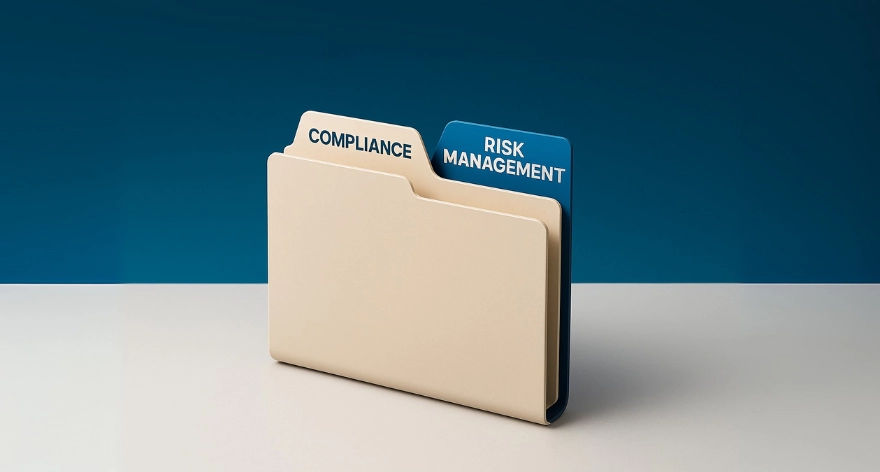Compliance and risk management are often mentioned in the same breath. However, they are two different disciplines, each with its own role. Organizations that confuse the two run the risk of focusing too much on ticking boxes or, conversely, having too little control over broader business risks. In this blog, we'll explain where compliance ends and risk management begins, and why the power lies in the combination.

What is compliance?
Compliance is about complying with the laws and regulations that apply to your organization. Think of sanctions legislation, anti-money laundering rules, anti-corruption legislation, privacy legislation, and reporting obligations. The goal is clear: to prevent your organization from incurring fines, legal problems, or reputational damage by failing to comply with legal requirements.
In practice, this means internal controls, policies, and documentation that demonstrate that your organization is acting in line with the applicable regulations. Compliance provides certainty that the basics are in order and forms a foundation on which you can continue to build.
Interesting read: What data do you need for an effective compliance process?
What is risk management?
Risk management looks beyond compliance. Whereas compliance focuses on externally imposed obligations, risk management identifies all risks that could threaten the continuity of your organization. These could include financial problems at suppliers, disruptions in the supply chain, cyber threats, or reputational damage.
The goal of risk management is to identify risks in advance, assess their likelihood and impact, and take appropriate measures. This increases your organization's resilience and better prepares you for unexpected events.
How compliance and risk management complement each other
Compliance and risk management have different starting points, but they reinforce each other. Compliance ensures that you comply with laws and regulations. Risk management also looks at risks that are not legally defined, but which could have major consequences.
An organization that combines both disciplines is stronger. You comply with legal obligations while building a robust strategy that protects your organization against broader risks.
Why both are necessary
Focusing solely on compliance can lead to a reactive attitude: you only take action when rules change or an audit is coming up. Working solely on the basis of risk management can lead to legal obligations being overlooked.
The strength lies in the combination. Compliance forms the foundation and risk management builds on that. Together, they ensure that your organization not only complies with the rules, but also remains agile and future-proof. This lays a foundation on which you not only limit risks, but also create space to seize opportunities.
Interesting read: Compliance is important, but why exactly?
Data as the foundation
Both compliance and risk management depend on reliable data. Without up-to-date and reliable information about customers, suppliers, and partners, it is impossible to properly assess risks or demonstrate compliance. Data not only helps to meet legal requirements, but also to identify risks at an early stage. Think of payment problems that indicate financial instability or sudden changes in sanctions lists.
At Altares Dun & Bradstreet, we work with globally business information that is continuously updated. This enables organizations to monitor changes in a timely manner and make informed decisions. Data thus forms a solid basis for effective compliance and risk management. Read more about our compliance solutions here.
Conclusion
Compliance and risk management are essential pillars for any organization that wants to grow in a complex environment. Compliance ensures that you comply with laws and regulations, while risk management protects you against broader threats. Together, they not only provide certainty, but also the confidence to look ahead with focus and agility.
